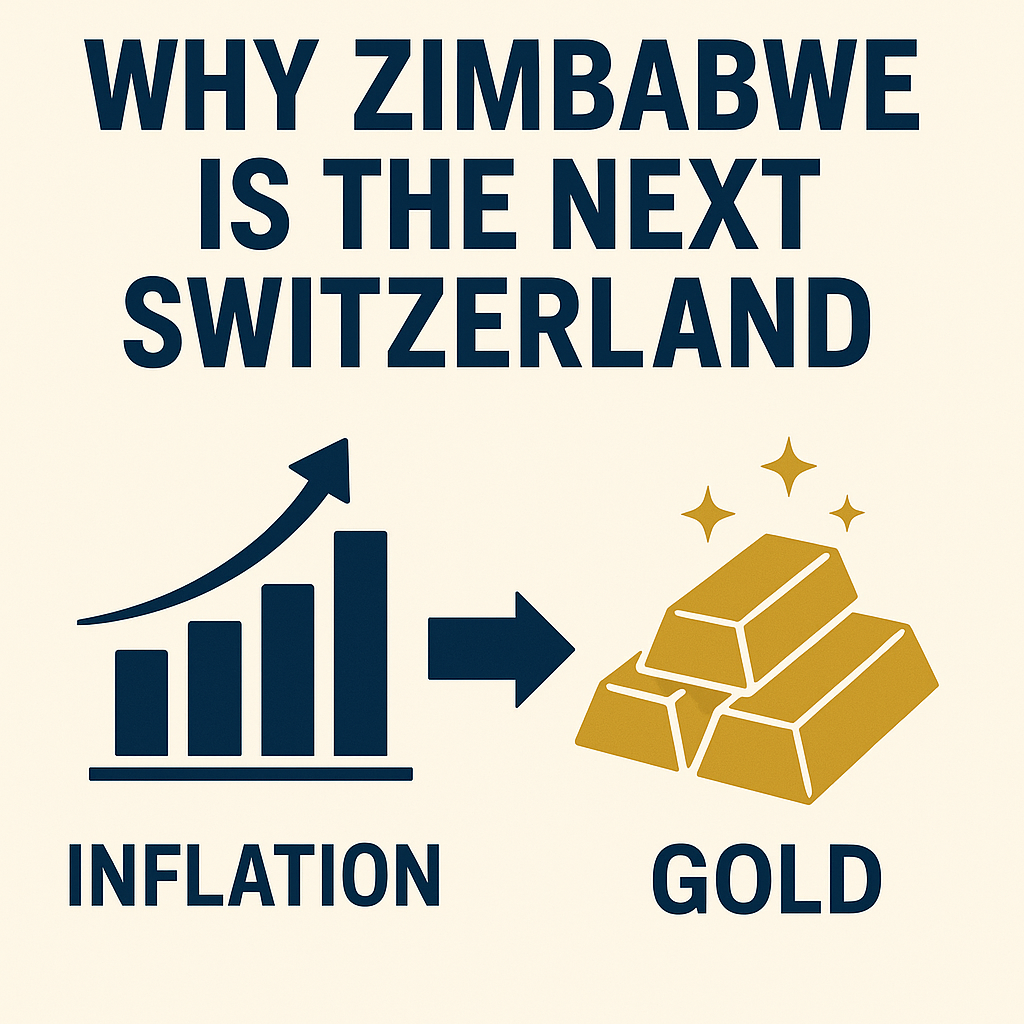From Inflation to Gold. Why Zimbabwe is the next Switzerland.
Zimbabwe sits on a mountain of riches—gold, platinum, lithium, and now oil and gas. But history teaches us a hard truth: having resources doesn’t make you rich. Managing them wisely does. That’s where the Digital ZiG comes in. If done right, it could be the game-changer that turns Zimbabwe from a cautionary tale of hyperinflation into a Dubai-style success story.
Why the Digital ZiG Matters
The Digital ZiG isn’t just another currency experiment. It’s a chance to reset trust in money, stabilize the economy, and channel resource wealth into productive investment instead of speculative chaos. A properly structured digital currency—transparent, blockchain-backed, and anchored to Zimbabwe’s natural resource base—could solve three chronic problems at once:
- Stop inflation dead in its tracks by tying issuance to gold, lithium, and hard reserves.
- Cut corruption and leakage by putting government spending and contracts on transparent digital rails.
- Unlock diaspora capital by making it frictionless to invest in Zimbabwe from abroad.
With the right guardrails, the Digital ZiG could become more than a payment system—it could be the bloodstream of a modern economy.
Phase 0: Credibility First
No digital currency will work unless people believe in it. That means:
- Fiscal discipline—no printing Digital ZiG out of thin air.
- Radical transparency—contracts, payments, and reserves published on-chain.
- Legal certainty—property rights and commercial contracts enforced in real courts.
Think of this as building the runway before the plane takes off.
Phase 1: Build the Pipes (Years 1–2)
The Digital ZiG must ride on real infrastructure, not wishful thinking. That means:
- Power and internet everywhere: data centers, stable electricity, mobile penetration.
- Sovereign Wealth Fund rules: resource royalties automatically flow into stabilization and future funds, visible on-chain.
- SEZs + Digital Rails: Special Economic Zones using the Digital ZiG for trade settlement, payroll, and logistics.
- Diaspora as VC: diaspora can buy Digital ZiG bonds or equity tokens directly from their phones, financing SMEs back home.
By the end of this phase, the Digital ZiG could be the default currency for trade, investment, and government services.
Phase 2: From Resources to Industries (Years 2–5)
Digital currency alone doesn’t create wealth—it must fuel industries. Imagine:
- Lithium → batteries: Digital ZiG-backed contracts ensure miners are paid fairly and processors deliver.
- Gold → ethical premium markets: each bar tracked on-chain, attracting buyers who pay more for traceability.
- Oil & gas → gas-to-power plants: contracts settled in Digital ZiG to prevent leaks.
- Agriculture → commodity exchange: farmers trade warehouse receipts in Digital ZiG, giving them instant liquidity.
In this model, the currency isn’t just money—it’s an enforcement tool, ensuring every transaction is clean and every deal honored.
Phase 3: The Knowledge Economy Flywheel (Years 5–10)
With Digital ZiG as the backbone, Zimbabwe can leapfrog into a new economy:
- STEM pipelines funded directly by the Sovereign Wealth Fund, with scholarships and apprenticeships settled in Digital ZiG.
- Digital payments everywhere: universal wallets, instant QR code transfers, open banking APIs for fintech startups.
- Green bonds & infrastructure tokens: global investors buy into Zimbabwe’s growth securely, transparently, and digitally.
By 2035, the Digital ZiG could be to Zimbabwe what the dollar peg was to Dubai: the bedrock of investor trust.
Why This Is Zimbabwe’s Moment
Dubai built its fortune not just on oil, but on smart financial engineering, transparent rules, and a willingness to think beyond resources. Zimbabwe can do the same—but with a uniquely African twist.
The Digital ZiG could become the cornerstone of the Zimbabwe Model:
- A digital-first economy where every mineral dollar is traceable.
- A diaspora-backed growth engine that channels remittances into infrastructure, not just consumption.
- A resource-to-industry pipeline where exports aren’t just raw ore but batteries, food, and technology.
If Zimbabwe gets this right, the conversation will shift from “Why is Zimbabwe struggling?” to “How did Zimbabwe become the Dubai of Africa?”

Leave a Reply